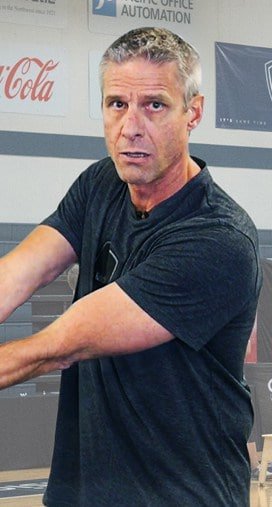
Jaimee Rindy | middle blocker at Coe College, juniors’ club coach
If there’s one thing I wish I could go back and change about my years of volleyball training, it would be that in all my time playing I only mastered two kinds of hits – the “one” and the “slide.” Granted, these attacks were effective, and it made sense to develop my power and shots with these hits than to learn something completely new. Better to be excellent at one hit than average at three. The theory was that if I got really good at my hits and my teammates got really good at theirs (which were different from mine), then combined we would have a great team.
This worked well – until it didn’t. If our opponent figured out how to stop one of our hits, it essentially took out one of our attackers. What we needed were versatile players who could hit from different places and at different tempos.
This is not to say that hitters shouldn’t have hits they prefer or hits they are exceptionally confident with. I certainly did, and it was that confidence in my own abilities (and my setter’s confidence in my abilities) that helped me get us out of some tough situations. But I do believe there’s a danger in getting too comfortable with being a single kind of hitter. It’s really about the mindset. It’s about breaking down the mental confines that inhibit growth. You hear it constantly, players saying, “I’m an outside. I don’t hit from the middle.” If they think like this, it’s because they were coached like this.
Of course, there are some skills that come more naturally than others, and people want to do what they’re good at. And time in the gym is of the essence. When you only have a few hours, you want to work with specific players on specific skills so you can help them be successful. It’s not reasonable to ask every hitter to master every hit.
That said, hitters should be able to hit multiple sets with some degree of confidence. For a coach, it’s invaluable to be able to mix up an offense and have the luxury of telling any hitter to hit anything. Too often, we allow hitters to hit only the general kinds of attacks for their position, which ignores the fact that they are volleyball players, not just middles or outsides or opposites.
Ultimately, all of this is not just about hitting. What it’s really about is allowing yourself to learn. It’s easy to fall into the routine and do what comes easiest to you. But to grow as an athlete, you have to move outside your comfort zone. We as coaches frequently establish that comfort zone in the first place and keep our athletes in it because we ourselves are scared. When was the last time you invited your middles to hit from the outside? Or to receive serve?
For the game to evolve, we need to break out of the boundaries we’ve created for positions, especially when it comes to hitting. All hitters should be prepared to hit from anywhere on the court so they can be ready to switch things up at a moment’s notice. It’s up to the coaches to make sure that hitters are trained as players, not robots whose roles are limited to just a few rote functions.
Jaimee Rindy is a junior middle blocker at Coe College in Cedar Rapids, Iowa.



